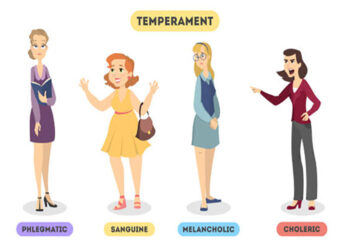This is a recap of a medical conference I attended on the 28th of January 2020. This post has been revised to bring out the most important points and takeaways from the conference.
Due to the increasing incidence of suicides during COVID-19, this topic on prevention of depression and suicide was apt at the time. Years after, these tips for preventing depression and suicide still apply.
The conference was themed on “Prevention of workplace depression”. The keynote speaker, Prof. Sunday O. Olotu, the then Medical Director of the Federal Neuropsychiatric Hospital, Benin City, expansively talked about suicide and ways to prevent it. He also emphasized ways to promote mental health in the workplace.
Here are some important statistics given by the speaker about suicide.
- Suicide is one of the leading causes of death among young people and some elderly people all over the world.
- There are high suicide rates in low and middle-income countries, but it cuts across all socio-economic strata. High rates indicate values greater than 25 deaths per 100,000, and less than 25 deaths for low rates. 75% of deaths are due to suicides in low and middle-income countries.
- Epidemiologically, suicide is the 10th leading cause of death in America, the 5th leading cause of death in China, and generally the 2nd leading cause of death amongst young people, second only to violence-related causes.
- Bullying is associated with a higher incidence of suicides among young people between the ages of 15 and 29 years.
- Most suicides are preceded by suicidal behaviors, ideations, and preoccupations like planning, and then, an actual suicidal attempt. Suicidal behaviors manifest as abnormal mental, emotional, psychological, and cognitive behaviors, where the individual preoccupies himself with thoughts centering on the need to end his own life.
- Globally, suicide attempts are more likely in females but deaths from successful suicide are commoner among males.[1]Wikipedia. 2023. “Gender differences in suicide.” Wikimedia Foundation. https://en.wikipedia.org/wiki/Gender_differences_in_suicide.
Other noted points at the conference include the theories of suicide, risk factors, protective factors, and preventive measures.
Theories of suicide
The keynote speaker talked about the theories of suicide:
- The biological theory, involving an imbalance of brain chemicals responsible for motivation and hopefulness
- The social theory
- Freud’s theory
- Menninger’s theory, and
- Joiner’s theory
Among these, the social theory and Joiner’s theory were the ones that particularly caught my attention.
In the social theory, the speaker described a form of emotional attachment that an individual has for external objects that he/she loves. These love objects can be other people, animals like pets, or other physical objects.
The image of the love objects gets so strongly attached to the person’s mind such that it becomes a part of that person. If there is any need to eliminate that object or develop hate for it, the victim would first need to take his/her own life first.
Joiner’s theory borders on the feeling that one is a burden to his/her family or loved ones and that by taking their own lives, they help relieve their burden. This is better explained by suicide attempts among those who have a chronic medical condition.
Risk Factors of Suicide
Risks factors of suicide pointed out in the course of the conference include the following;
- Alcoholism
- Socioeconomic factors
- Medical conditions
- Psychiatric illness (depression, schizophrenia, anxiety disorder)
- Poor sleep/agitation
- Stress and psychosocial problems
- Bereavement
- Retirement and Unemployment
- Sexual assault, and
- Displacement from home
Protective Factors of Suicide
Some protective factors were also highlighted as follows:
- Educational level
- Financial solvency
- High social status
- Inner self-satisfaction
- Engagement in rewarding activities
- Religious involvement
- Good sexual life
- Good personality
- Hopeful aspiration
Suicide Preventive Measures and Promotion of Mental Health
In many parts of the world, suicide is not only considered taboo but also a crime punishable by law even if the victim survives the attempt. In an actual sense, victims of suicide or suicidal attempts need more help in preventing suicide and promoting their mental health.
Some important preventive measures for suicide and the promotion of mental health include the following.
- Catharsis – where one finds ways and exercises that purge them from repressing feelings and emotions. Music is a good catharsis to some people, others involve other exercises.
- Enhancing individual strengths and weaknesses.
- Create a redirection of emotions to some other objects instead of oneself.
- Discouragement of luring press reports of suicide cases, to prevent the “copycat phenomenon”. It was noticed that the press embellishes suicide in the manner with which they report suicidal cases. Other vulnerable individuals may seek to gain fame even after death by taking their own life since they are sure it would give them some publicity even after death.
- Clubs, anti-suicide clubs
- Involvement of non-governmental organizations.
- Interpersonal community relationships
- Mental health care
- The national response, in line with the SDG for non-communicable diseases
- Legislation to de-criminate suicide attempts and focus more on prevention and rehabilitation.
Lastly, there is a role of the individual and the general community in preventing suicides. Discriminatory activities should be discouraged, while social bonding should be encouraged.
Smiles, hugs, and other social expressions have been shown to reduce stress and prevent suicides. Catharsis is an important way to diffuse stress resulting from internal or external stressors and conflicts. It is also important to seek help when one is physically, mentally, or emotionally exhausted.
References
| ↑1 | Wikipedia. 2023. “Gender differences in suicide.” Wikimedia Foundation. https://en.wikipedia.org/wiki/Gender_differences_in_suicide. |
|---|

















